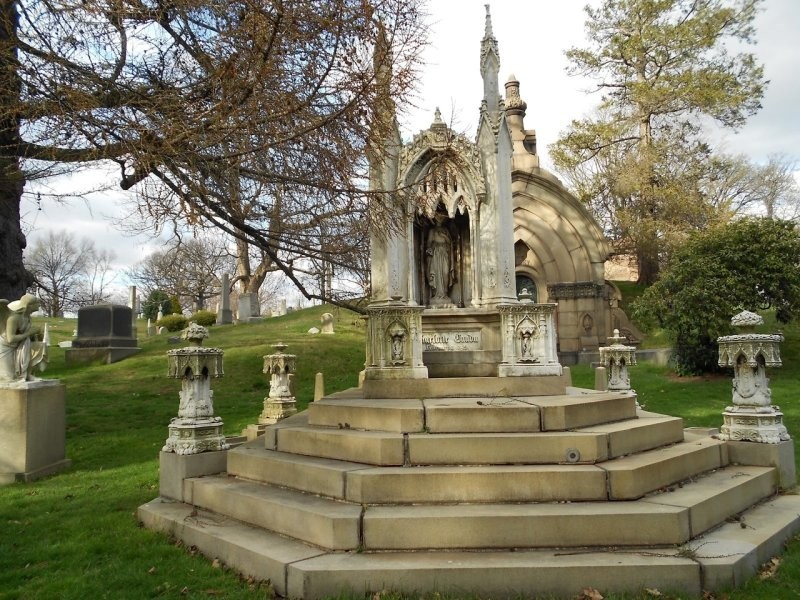The story of the tragic death and the majestic monument (9 photos)
Sometimes, in an attempt to hold on to loved ones who have passed away, people create such magnificent and touching dedications that they later turn into public cultural attractions. 
Green-Wood Cemetery in Brooklyn has the status of a historical monument. Many cultural figures, politicians, military men and other famous people found their final refuge here. 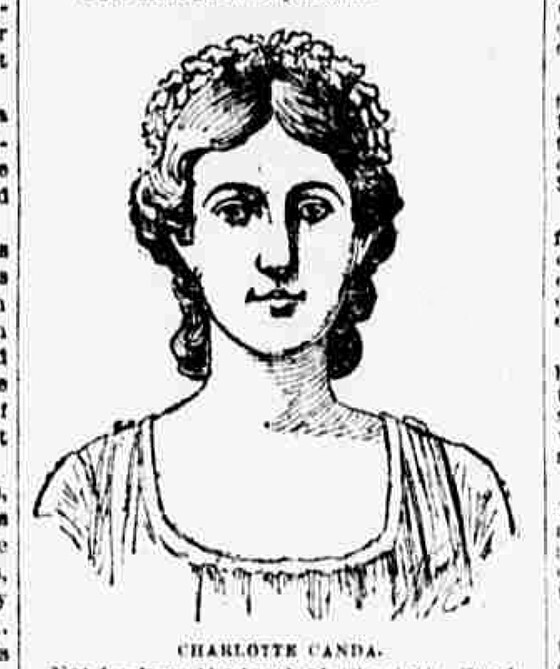
There are many unusual tombstones, crypts and monuments on it. Among the latter, one of the most intricate and tragic is the monument to Charlotte Canda, who died in a carriage accident at the age of 17. 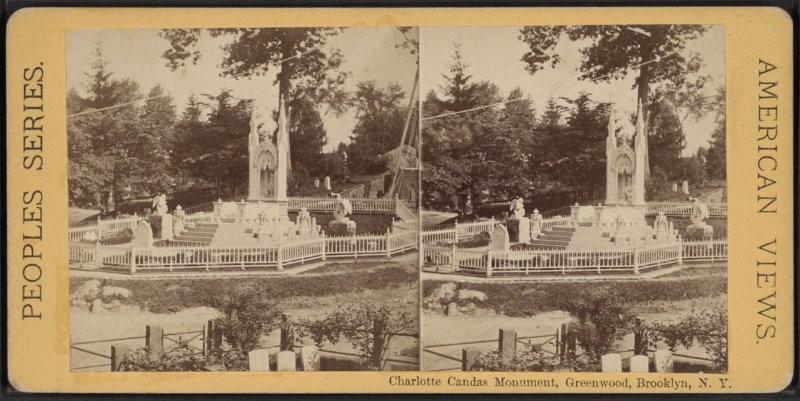
The girl was the light in the window for her parents and the first beauty of the city. Two splendid little drawing-rooms, located to the left of the entrance to the old mansion, were furnished for her private use, and there she received her admirers and entertained her friends in a style suited to the taste and position of the girl in society.
Every old New Yorker knows by heart the sad story of her death, and grandmothers of the second generation tell about the fatal accident that happened to her on a cool February day in 1845, when her birthday was celebrated. 
Charlotte was returning from a walk around the city when, at the corner of Broadway and Fourth Street, the horses harnessed to a carriage were frightened by a clap of thunder and bolted. Whether she was thrown out or jumped out on her own in an attempt to escape is unknown. Charlotte was brought to the New York Hotel, where she soon died from her injuries.
The horses rushed into the stable without even damaging the carriage. And to this day, many, retelling this story, note that if Charlotte had held on to the carriage, she might not have been hurt. 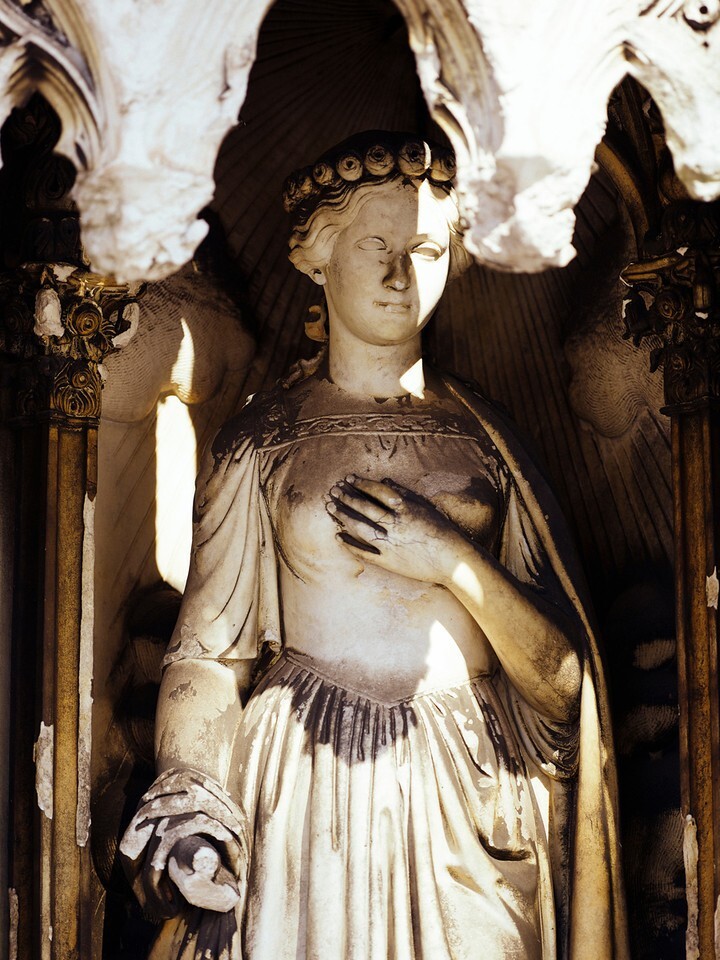
At that point in time, Charlotte was working on a monument project for her recently deceased aunt. But a luxurious memorial now decorated her grave.
The monument was made in Italy, from Carrara marble, and, as the story goes, Charlotte’s entire dowry, which she never needed, was spent on it. 
There is no other monument similar to this one in the cemetery. The carving is so ornate and delicate, and the whole work is so delicate, that it is already amazing that the tombstone withstood the rather harsh local climate. 
The statue of the girl stands under a canopy of white marble in the Gothic style, from which two low marble wings extend, hugging the stone that hides her remains from the world. To the right and left, at a short distance, there are kneeling angels, each on a pedestal facing the monument.
It is symbolic that the height and width of the memorial is 17 feet - the number of years of Charlotte’s short life. A canopy of stars and rose buds symbolizes the youth of the deceased. 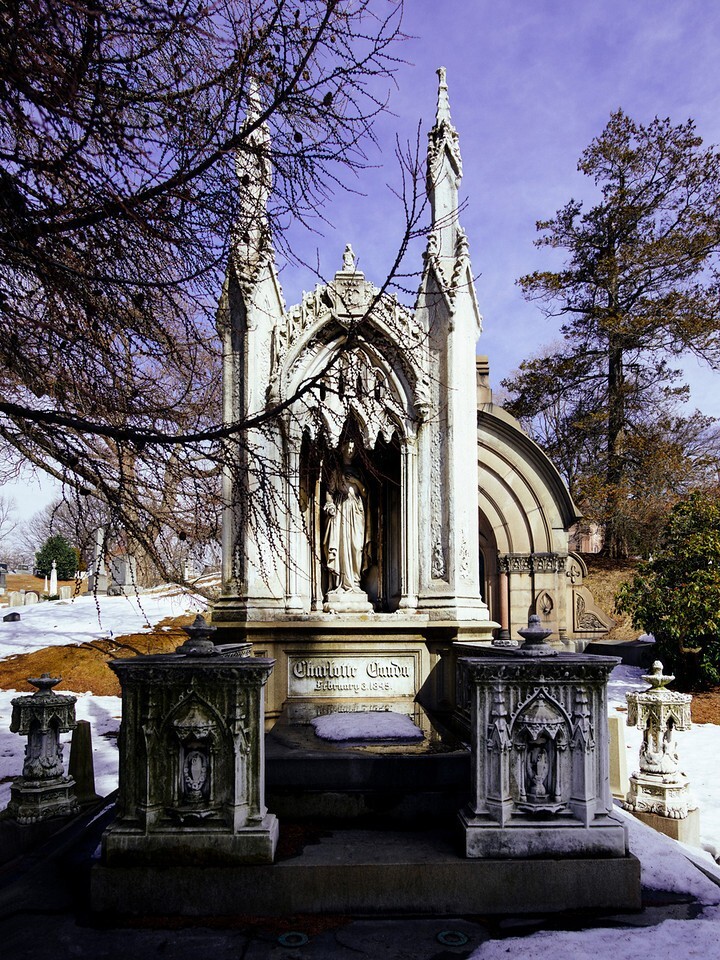
A year later, Charles Albert Jarrett de la Marie, Charlotte's fiancé, could not stand the grief and committed suicide. According to church laws, he could not be buried on consecrated ground, and he was laid to rest outside the fence, but nearby, allowing the lovers to unite in the afterlife. 